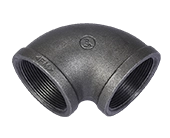Ensuring proper ventilation when working with jianzhi pipe fittings, or any type of pipe fittings, is essential to maintain a safe and healthy work environment.
Here are several steps you can take to ensure proper ventilation:
- Assess the Work Area: Before beginning work, assess the work area to identify potential ventilation challenges. Consider factors such as the size of the space, the presence of confined areas, the type of ventilation system available, and any potential sources of airborne contaminants.
- Open Doors and Windows: If working indoors, open doors and windows to allow for natural ventilation and airflow. jianzhi pipe fittings This can help exchange stale indoor air with fresh outdoor air, reducing the concentration of airborne contaminants and improving air quality.
- Use Exhaust Fans: If available, use exhaust fans or ventilation systems to remove airborne contaminants and promote airflow in the work area. Position fans strategically to create a cross-ventilation effect and ensure thorough air circulation throughout the space.
- Portable Ventilation Equipment: Consider using portable ventilation equipment, such as air purifiers, air scrubbers, or portable exhaust fans, to supplement existing ventilation systems or provide additional airflow in confined or poorly ventilated areas.
- Avoid Blocking Ventilation Openings: Ensure that ventilation openings, such as air vents, ducts, or windows, are not blocked or obstructed by equipment, materials, or other objects. Keep ventilation pathways clear to allow for unobstructed airflow and proper ventilation.
- Use Respiratory Protection: When working in areas with poor ventilation or high concentrations of airborne contaminants, such as dust, fumes, or gases, use appropriate respiratory protection, such as respirators or masks, to prevent inhalation of harmful substances.
- Monitor Air Quality: Use air quality monitoring equipment, such as gas detectors or particulate counters, to monitor airborne contaminants and ensure that air quality standards are met. Regularly monitor air quality throughout the work process and adjust ventilation as needed to maintain safe working conditions.
- Limit Exposure Time: Minimize the amount of time spent working in areas with poor ventilation or high concentrations of airborne contaminants. Schedule work tasks to minimize exposure, take regular breaks in well-ventilated areas, and rotate personnel to reduce prolonged exposure to harmful substances.
- Provide Training: Provide training to workers on the importance of proper ventilation, pipe fitting manufacturer the potential hazards of exposure to airborne contaminants, and the use of respiratory protection and other safety measures. Ensure that workers are aware of ventilation procedures and protocols and know how to respond to ventilation-related emergencies.
- Follow Regulations and Guidelines: Adhere to relevant regulations, guidelines, and best practices for ventilation in the workplace, as outlined by occupational safety and health authorities or industry standards organizations. Comply with ventilation requirements specific to the type of work being performed and the hazards present in the work environment.
By following these steps and implementing proper ventilation practices, you can help ensure a safe and healthy work environment when working with jianzhi pipe fittings or any other type of piping system. Proper ventilation is essential for protecting workers from exposure to airborne contaminants and maintaining optimal indoor air quality in the workplace.
